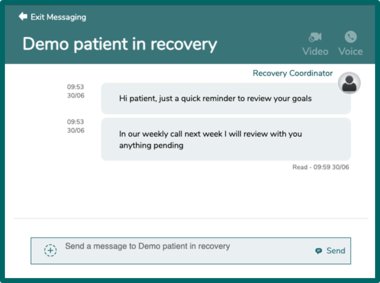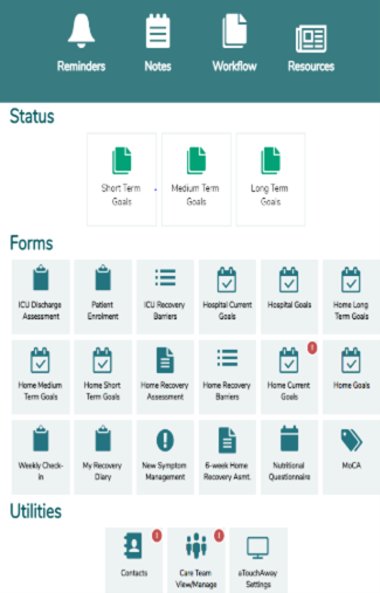Information on the digital ICU recovery pathway
Information for patients, families, and clinical teams on the digital ICU recovery pathway
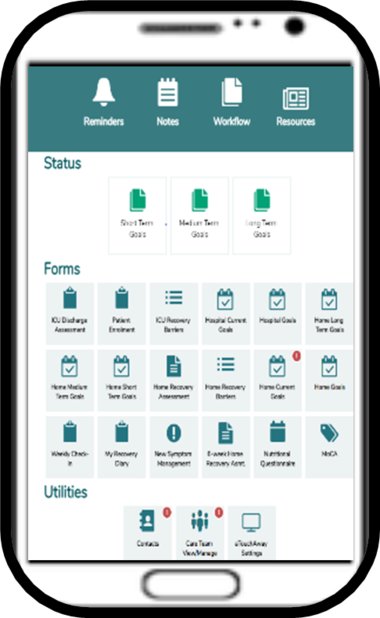 Our innovative digital ICU recovery pathway puts the patient at the centre of setting and achieving their bespoke ICU recovery goals with support from a dedicated recovery coordinator. The recovery pathway addresses ‘fracture points’ and gaps in services, and provides support to ICU survivors as they move from ICU to the ward and then to home.
Our innovative digital ICU recovery pathway puts the patient at the centre of setting and achieving their bespoke ICU recovery goals with support from a dedicated recovery coordinator. The recovery pathway addresses ‘fracture points’ and gaps in services, and provides support to ICU survivors as they move from ICU to the ward and then to home.
Read more about the background to the pathway here.
The ICU digital recovery pathway comprises eight elements:
- e-forms assessing baseline status after ICU discharge and recovery barriers
- Setting of bespoke recovery goals based on Goal Attainment Scaling*
- Patient self-reported e-monitoring of goal achievement with automated reminders
- Provision of e-resources tailored to recovery barriers
- Patient recovery e-diary
- Tailored activity reminders
- Note function enabling a recovery coordinator to document patient encounters with optional electronic medical record upload
- Two-way digitally secure text, audio, and video communication between the patient, nominated family members, and the recovery coordinator
* Turner-Stokes, L. (2009). Goal attainment scaling (GAS) in rehabilitation: A practical guide. Clinical Rehabilitation, 23(4), 362–370.
A dedicated ICU recovery coordinator is a central communication point across care transitions and at home. The digital ICU recovery pathway has been co-produced by healthcare professionals, clinical academics, patients, and family members, in collaboration with our e-health partner Aetonix. The digital ICU recovery pathway was launched as a clinical innovation project at Guy’s and St Thomas’ NHS Foundation Trust in June 2021.
1. e-forms assessing baseline status and recovery barriers in hospital and at home
On enrolment to the pathway the recovery coordinator assesses baseline status under the following four domains: mobilisation, activities of daily living (ADLs), cognition, and psychological issues.
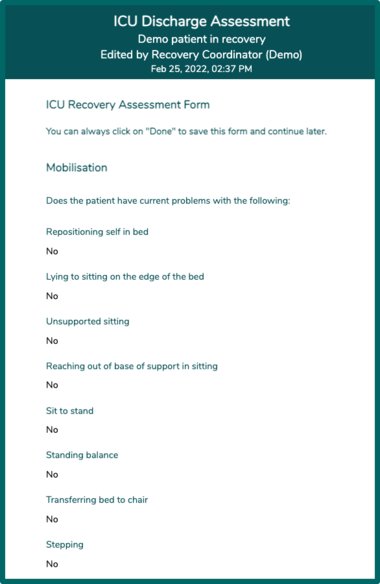
Patient specific barriers to recovery are also identified.
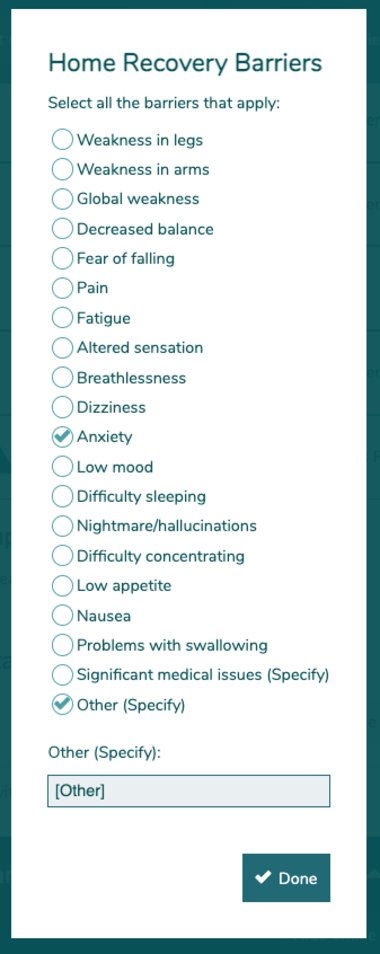
2. Setting of bespoke recovery goals based on Goal Attainment Scaling
The time scale of goal setting is different for in hospital and at home, as shown in picture below.
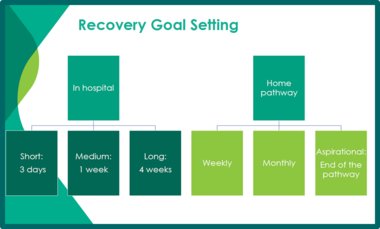
Examples of the goal setting in hospital and at home.
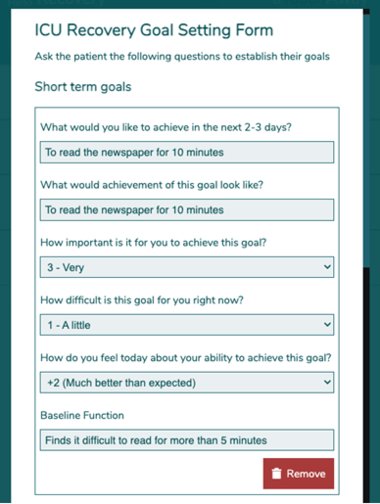
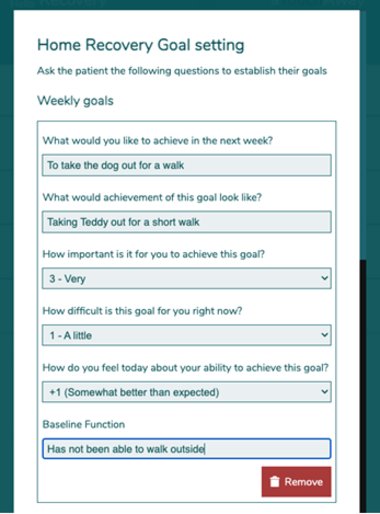
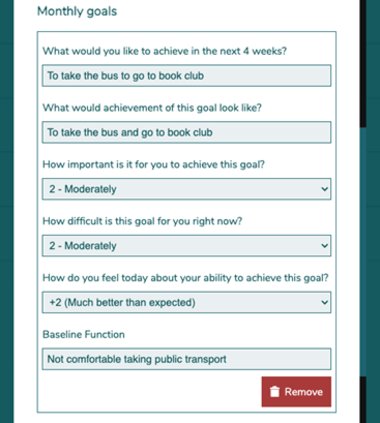
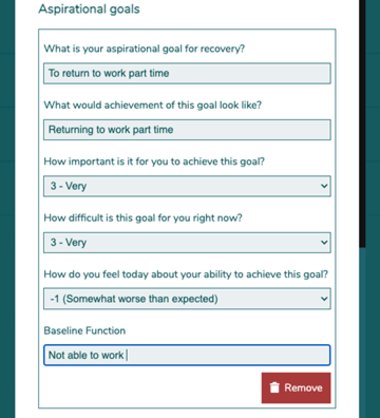
3. Patient self-reported e-monitoring of goal achievement with automated reminders
Patients are sent an alert to rate their recovery goals.

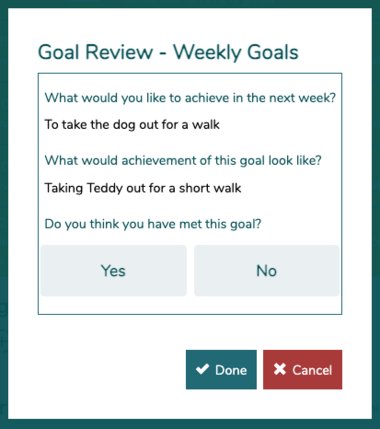
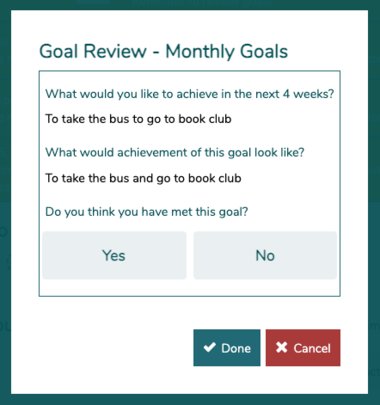
If the goal is achieved, the patient receives a notification.
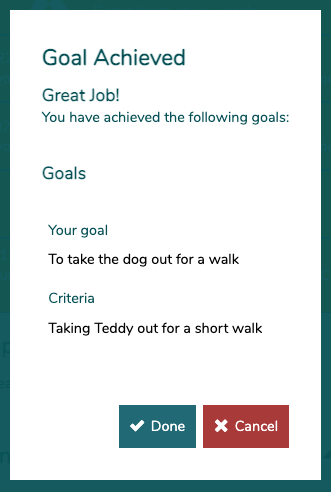
If the goal is not achieved the patient provides their assessment as to reasons why and the recovery coordinator works with them to reset the goal.
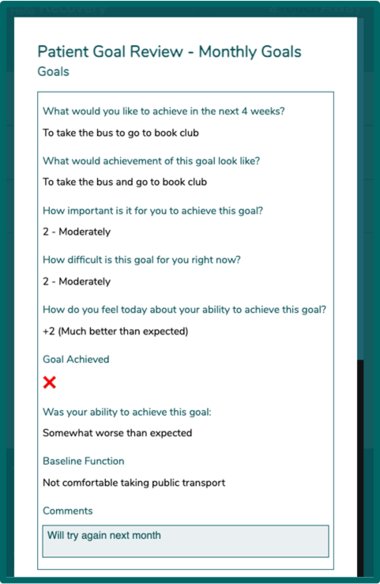
4. Provision of e-resources tailored to recovery barriers
Patients have access to over 30 recovery resources. The recovery coordinator will suggest and make available via aTouchAway the most suitable resources, based on assessment of individual need. Below lists some of the recovery resources available for the recovery coordinator to select.
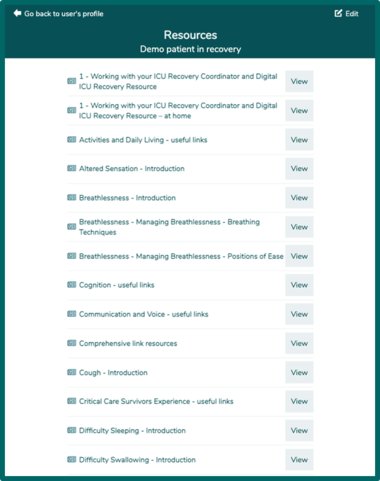
5. Patient recovery e-diary
The patients have access to their own recovery e-diary, in which they can journal their recovery journey and milestones.
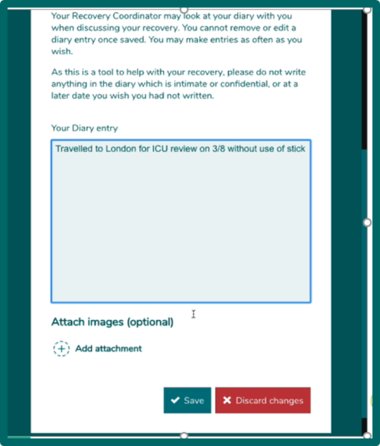
6. Tailored activity reminders
Patients are sent reminders via the aTouchAway app on their personal device regarding recovery activities and when to complete goal monitoring and weekly forms and questionnaires.
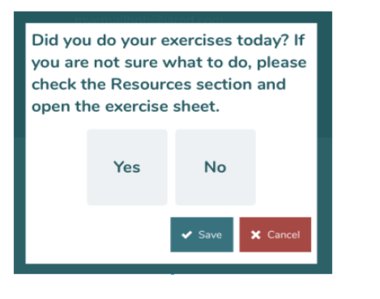
7. Note function
The note function enables the recovery coordinator to document patient encounters and interventions. Examples of details recorded include assessment of the patient’s current status, upcoming appointments, mobility, activities of daily living, cognition, psychological wellbeing, goals and action plans. There is the option to upload this content into an electronic medical record system as a pdf document.
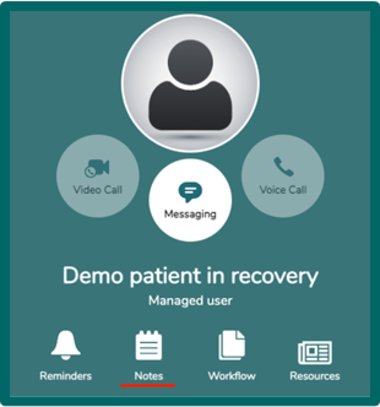
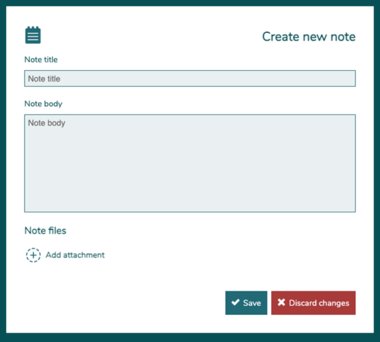
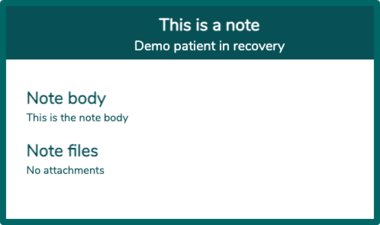
8. Two-way digitally secure text, audio, and video communication between the patient, nominated family members, and the recovery coordinator

Example of cordinator and patient messages:
